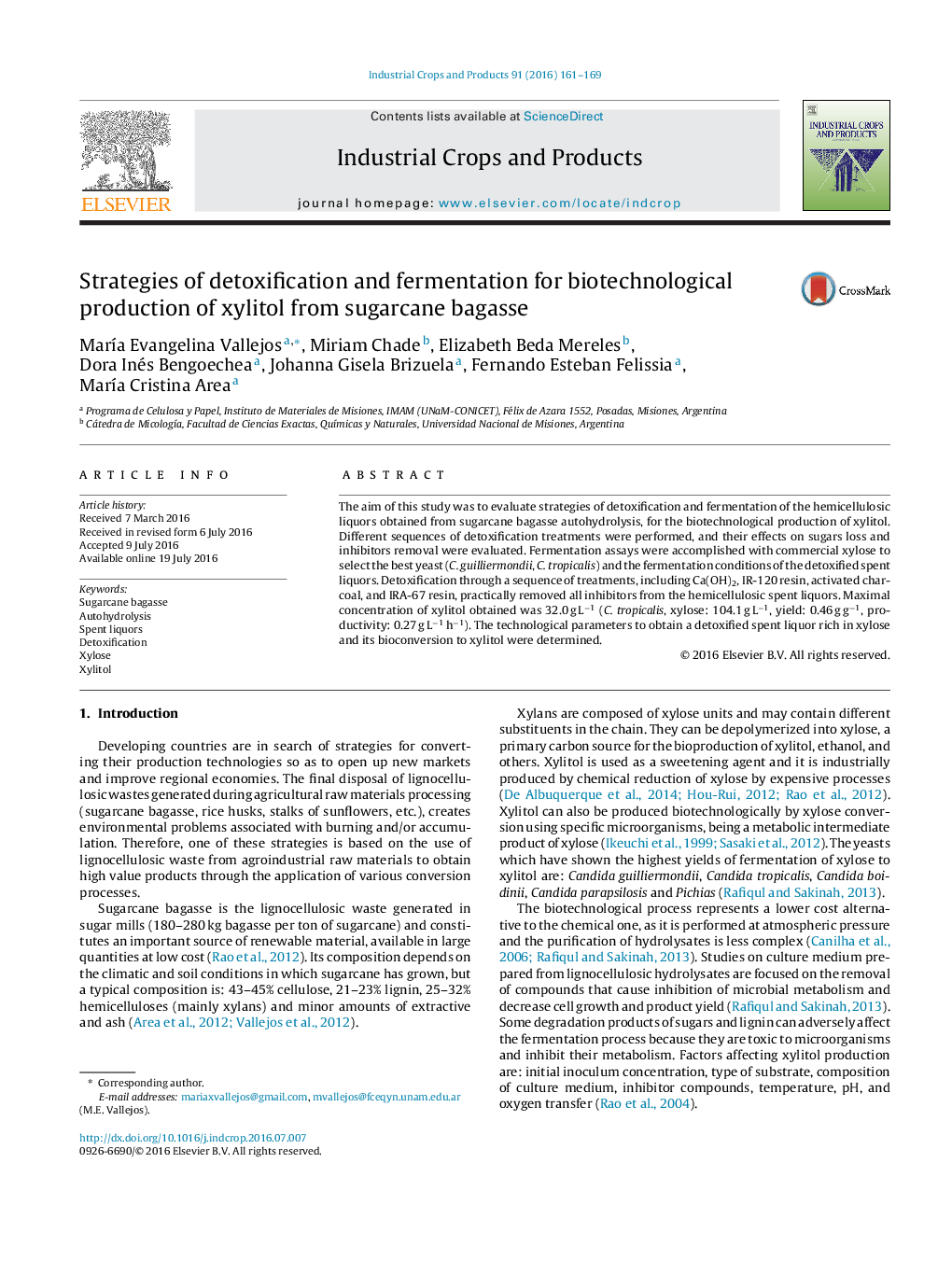| Article ID | Journal | Published Year | Pages | File Type |
|---|---|---|---|---|
| 4511989 | Industrial Crops and Products | 2016 | 9 Pages |
Detoxified liquor rich in xylose from sugarcane bagasse autohydrolysis was obtained.Inhibitors were virtually removed by Ca(OH)2, IR120, activated charcoal, and IRA67.Post-hydrolysis-concentration-overliming produced the highest xylose loss.The use of anionic resin to change pH improved the adsorption of acetic acid.The maximum concentration of xylitol obtained was 32.0 g L⿿1 (yield: 0.46 g g⿿1).
The aim of this study was to evaluate strategies of detoxification and fermentation of the hemicellulosic liquors obtained from sugarcane bagasse autohydrolysis, for the biotechnological production of xylitol. Different sequences of detoxification treatments were performed, and their effects on sugars loss and inhibitors removal were evaluated. Fermentation assays were accomplished with commercial xylose to select the best yeast (C. guilliermondii, C. tropicalis) and the fermentation conditions of the detoxified spent liquors. Detoxification through a sequence of treatments, including Ca(OH)2, IR-120 resin, activated charcoal, and IRA-67 resin, practically removed all inhibitors from the hemicellulosic spent liquors. Maximal concentration of xylitol obtained was 32.0 g L⿿1 (C. tropicalis, xylose: 104.1 g L⿿1, yield: 0.46 g g⿿1, productivity: 0.27 g L⿿1 h⿿1). The technological parameters to obtain a detoxified spent liquor rich in xylose and its bioconversion to xylitol were determined.
Graphical abstractFigure optionsDownload full-size imageDownload as PowerPoint slide
